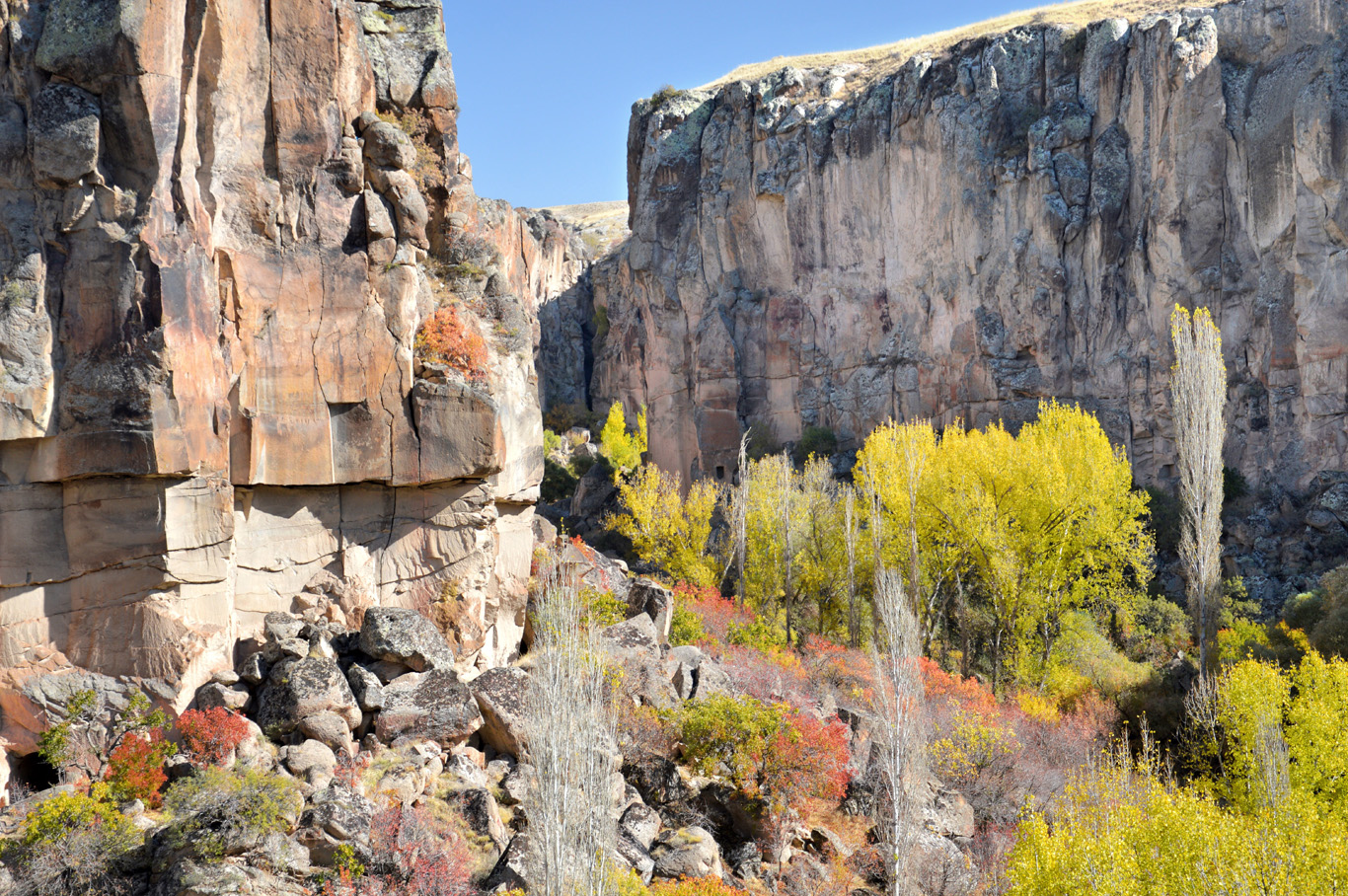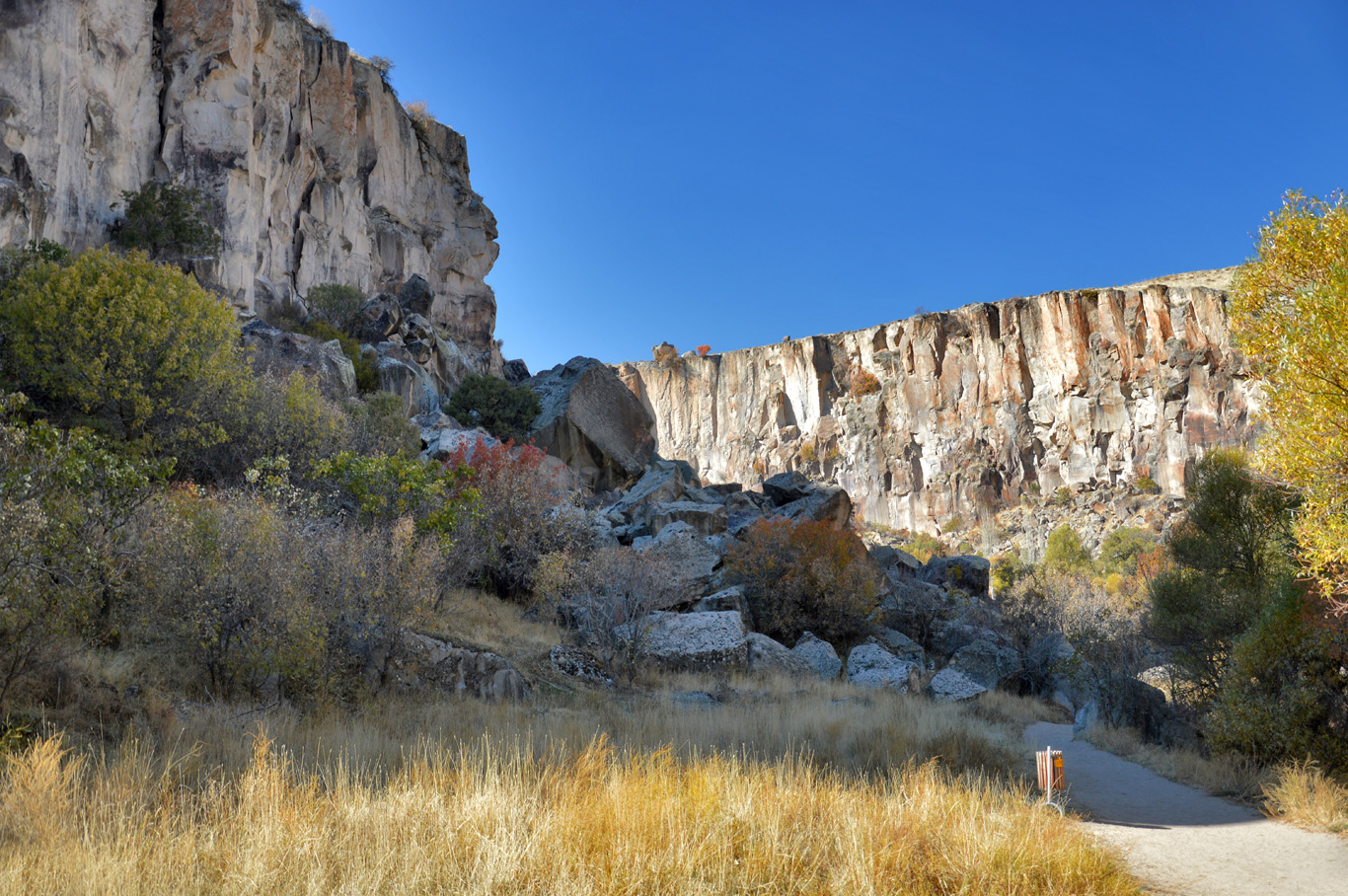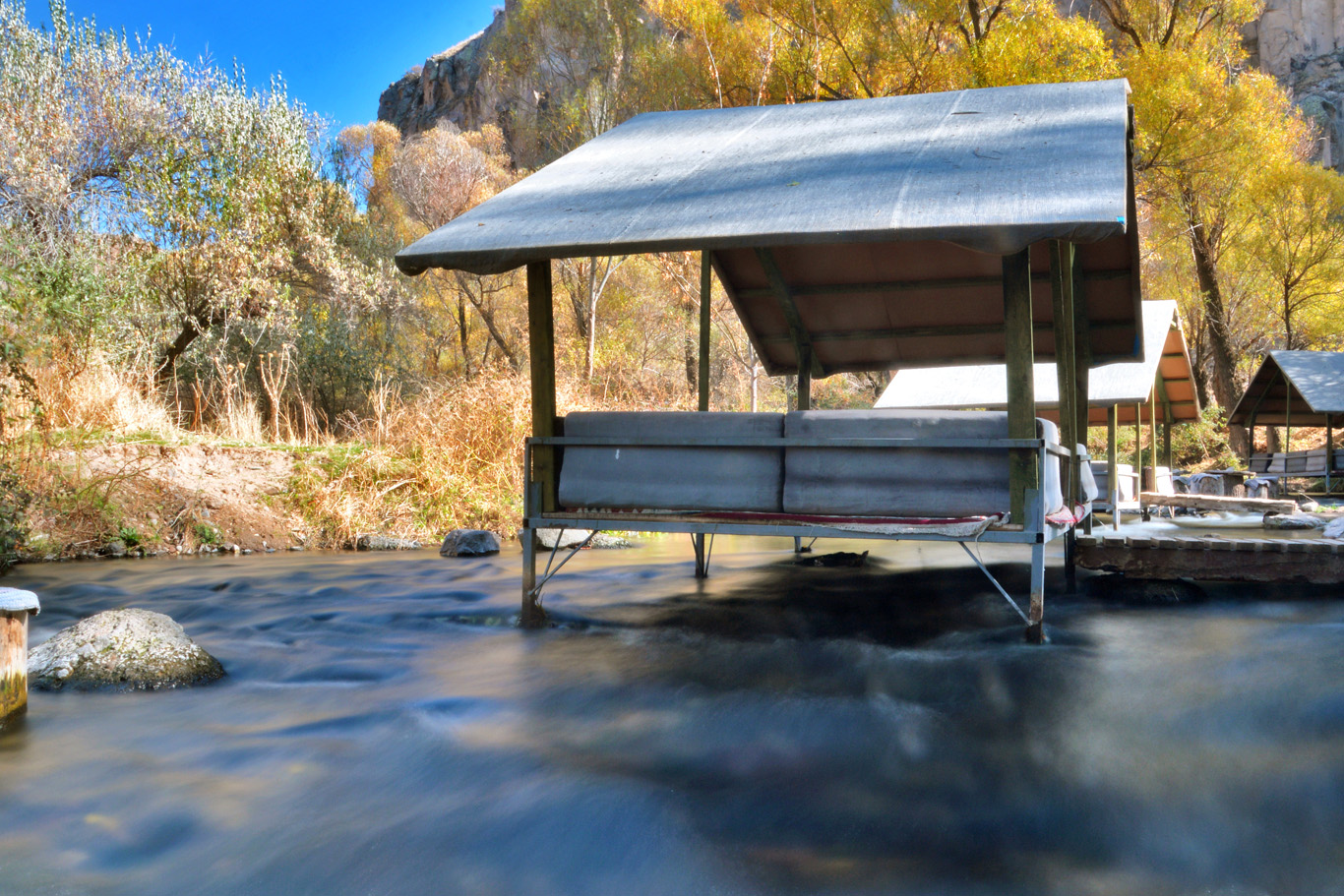Ihlara Valley lies in one of the most beautiful regions in Turkey, Cappadocia, full of natural rock formations (fairy chimneys) taking the shape of chimneys, mushrooms and sculpture-like forms as if they were carved by man. Although Cappadocia is well known, mostly because of the famous air balloon flights (I've posted photos and described it in detail here), Ihlara Valley seems not as visited by travelers. When I was there, I didn't see any other tourists (which was great!). However, I would like you to encourage you, during your stay in Cappadocia, to see the valley and the gorge as it boasts both historical and natural significance and is somewhat different from the rest of the region.
Now Turkish visa can be obtained online.
How to get to Ihlara Valley
Ihlara is situated in Aksaray Province, 36 km (22 miles) from Aksaray and 80 km (50 miles) from the main gateway town to Cappadocia region - Goreme (I've described the town of Goreme here). If you don't drive, there are plenty of tourist offices in Goreme (and I suppose all over Cappadocia) that offer various tours in the region that also include the Ihlara Valley. From the town of Ihlara, you can go down to the canyon and walk through it around 8 km (5 miles) along the Melendiz River to the town on the other side - Guzelyurt.
Mount Hasan, on the way to Ihlara
Ihlara Valley
The canyon
The canyon
Ihlara Valley
Ihlara Valley
Ihlara Valley
A rock in the shape of a dog head
Autumn colors in Cappadocia
Basalt columns
A sign made of stones in Melendiz river
Natural significance of Ihlara Valley
The natural beauty of the area is obvious to everyone who ever hiked the valley. Nearby, the magnificent Mount Hesan (3,253 meters / 10,673 ft. above sea level), dormant volcano that gave birth to Ihlara canyon ovelooks the area of Aksaray Province. After the eruption, tectonic movements produced high pressure in the Earth's crust, reshaping it and creating cracks that led to the formation of the canyon. The adjacent land was covered by volcanic ashes and a layer of hard rocks and lava. When the lava solidified and centuries passed, the lower parts of the tuff rock (consolidated volcanic ash) and other softer material eroded by the forces of the nature: rain, wind, flowing water etc. leaving the harder, upper section intact. This is how the ubiquitous in Cappadocia "fairy chimneys" or hoodos (geological term) were formed. You can also find them right at the other end of Ihlara Valley, near the cave town called Selime (also a must see!) In future articles, I will upload the photos of the rock formations and cave towns that I have taken in the area.
Inside the canyon you won't find any of the fairy chimneys (and maybe that's better because it's nice to see something different for a change) but there are some other amazing rock formations like basalt columns, similar to those I have seen in Giant's Causeway in Northern Ireland and on black sand beaches in Iceland.
The walk is really pleasant, you surely will encounter some wild life, for example birds and lizards and in the middle of the way there are some wooden huts set right in the center of the stream where you can indulge yourself in some Turkish coffee and other local snacks.
If you are thinking about when to visit Cappadocia, I would recommend to do it in Fall/Autumn. The weather is still beautifull and it's not as hot as in the summer. What's more, the trees and bushes turn red, yellow and orange providing spectacular scenery contrasting with the bare rocks.
Historical significance of Ihlara Valley
The significance of the area is related mainly due to the numerous churches and houses carved out of the canyon walls. Aksaray Province and the Ihlara valley were a very important religious center for early Christians escaping Roman soldiers. The christian Churches seen today date back to the early centuries AD. They are damaged in most of the parts, however, the original frescoes (ninth-tenth century AD) can still be visible and there are some works in progress to preserve them.
You will come across many churches in the valley, the most important are: Agacalti, Sumbullu, Ala, Egritas, and Kirkdamatli (St. George's) Church. The latter is located in the upper part of the canyon and a short climb up some steep steps is required, nonetheless it's really worth it as it allows you to see the cross section of the entire gorge. Really amazing.
The Ihlara Valley resembles Vardzia Cave Monastery in Georgia which I described here.
Lonely tree
Cross section of the canyon seen from Kirkdamantli (St. George's) Church, Guzelyurt in the background
Kirkdamantli (St. George's) Church
Frescoes in Kirkdamantli (St. George's) Church
Agacalti Church
Green lizard found by the river
Huts on the river
The hut on Melendiz River
Ihlara Valley seen from St. George's Church
Cave dwellings in the wall of the cliff, similar to Vardzia in Georgia
Restaurants on the river
Enjoying dinner on the river
Delicious Turkish meal
The town of Guzelyurt
Related Posts
Copying without permission is not allowed. If you wish to use any of the site's content (photos or text) or work with us, please contact us.
We welcome questions, advice, support or criticism. However, spam comments will be removed.
































